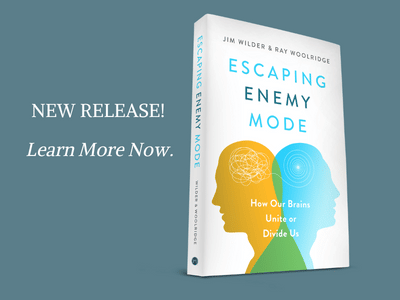Rebecca Davis is the collaborating author, with Dale Ingraham, of TEAR DOWN THIS WALL OF SILENCE: DEALING WITH SEXUAL ABUSE IN OUR CHURCHES (AN INTRODUCTION FOR THOSE WHO WILL HEAR), published by Ambassador International in 2015. She is interviewing Michele Hardy, who for twelve years has served as a prayer ministry educator and facilitator, pastoral counselor, and Certified Life Coach, focusing on relationships and recovery. Michele has founded a 501(c)3 incorporation called The Joy Center, Inc., in Easley, South Carolina.
Rebecca: Michele, I want to let the Joy Starts Here readers know that a couple of years ago when I was researching the issue of sexual abuse and how to help people who are suffering from its trauma, I prayed over which person to contact at the Immanuel Approach facilitators directory. The Lord brought me to you, and it’s an honor to know you.
Michele: I remember our first meeting and how genuine you seemed in your desire to address the lack in the body of Christ around the issue of dealing with weakness, victimization, and protecting the vulnerable. I was new to South Carolina and was so grateful to have made the connection with you. It seemed like a God-sized appointment for us.
Rebecca: This was all six months to a year before I met Dale Ingraham and began working on Tear Down This Wall of Silence. So here we are. You’ve been on a long journey of healing since your abuse. Can you give us some highlights of what God has done through the Immanuel Approach and the Immanuel Lifestyle to bring about the joyful life of thriving that you live now?
Michele: Wow. I began the counseling process as a client about twenty years ago, and God provided gentle help and wisdom through wise people along the way, but I can’t say that true healing took place then. I just sort of gained strength to limp less. At a particularly traumatic season of my life, I went to a counselor who practiced prayer ministry (not Immanuel Approach) and found some true healing. Jesus was teaching me that it was actually possible to connect with Him in real time.
Along the way I completed my own education as a counselor and also became trained in prayer ministry, but I didn’t integrate prayer ministry a whole lot with my own clients, because my own experience as a client had been that I couldn’t experience healing from trauma without actually being re-traumatized in the process.
Then in 2010 I discovered Immanuel Approach. I found that its main goal is to encounter the living Jesus, the God who is with me, was with me, will always be with me. Freedom from pain and suffering is a byproduct of this main goal.
Rebecca: Your story is awesome and deserves a greater telling, which I hope you’ll eventually give it. Why do you think a book like Tear Down This Wall of Silence is needed in our Christian communities?
Michele: Tear Down this Wall of Silence is profoundly important because we can never heal what we can’t even talk about. Churches for too long have stayed away from abuse issues, either refusing to really acknowledge them and deal with them or directing people to professionals who “deal with that sort of thing.” But there are not enough counselors on the planet to help. Churches can and should overcome the insecurity and wrong thinking and become healing communities for survivors and a safe haven for those being victimized. We can learn the skills necessary to become gentle protectors of the vulnerable, but not if we can’t even have the discussion.
Rebecca: In your own case, how do you think this book could have changed your situation when you were a young adult?
Michele: When my own abuse was happening, I didn’t even know what sexual abuse was. I wish my own church had known how to handle what I was saying to them when I “confessed,” and not re-victimized me when I was trying to do the right thing. I think if people in my church had read Tear Down This Wall of Silence to help them understand the dynamics of sexual abuse and to learn how to respond as protectors rather than enablers, they may have understood how to create a safe place for me to go for help in the aftermath. Tear Down This Wall of Silence emphasizes the importance of listening to survivors without shame or blame, and not enabling the abusers with the sin of self-protection. My own church’s response was that they didn’t believe me, and they immediately called a meeting with the senior pastor to “work it out” with the abuser and his wife. It was similar to the story in Tear Down This Wall of Silence of the student confiding in the school counselor that her dad was abusing her, and then the school counselor calls a meeting with the family where the dad holds her on his lap and says, “Oh honey, you know I’d never hurt you, I love you.” That story really resonated with me.
I’m glad that Tear Down This Wall of Silence addresses the church’s relentless teaching on “purity,” and the seeming holy-grail status of abstinence until marriage, and the subtle message of being “damaged goods” if a person (primarily women) doesn’t hang on to their virginity as a “gift for their spouse.” If I had heard teachings from the pulpit and in other church gatherings about predatory behavior the way this book presents, I believe it could have made a difference.
This book also talks about misunderstandings about forgiveness, and that may be the most misunderstood ideal of the church. When people just say the words so that the enablers can feel better, that isn’t true forgiveness. Also, forgiveness isn’t the antidote for sorrow and grief and loss. It’s a place that we need to be led, and Jesus leads us there as a good Shepherd at His own pace. He doesn’t hurry us. We miss the beauty of Jesus when we pressure people to skip that journey.
Rebecca: Chapter 13 of this book, “The Abuse Survivor’s Shepherd,” ties in with what you’re talking about there, and also with the work you do, by talking about who Jesus really is and what He really does. Could you elaborate on that connection?
Michele: When I was younger, I thought the gospel was corrective instead of restorative. There’s a huge difference between restoration and correction. Chapter 13 talks about how Jesus is my song, my strength, my wisdom, and my joy. I love connecting with those restorative truths.
[Tweet “When I was younger, I thought the gospel was corrective instead of restorative. “]
As an Immanuel Approach prayer facilitator, I learn a little more about Jesus every time I see him move in people’s lives. He is so tender, gentle, always right on time, and keeps the right pace. I’ve learned to just follow the path that He forges. It is such an honor to sit with people and be a part of their journey. It’s deeply rewarding to see them experience Jesus in a way that is rooted in truth, often for the very first time in their lives.









